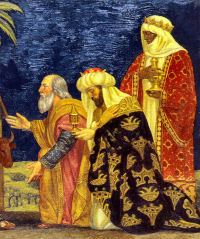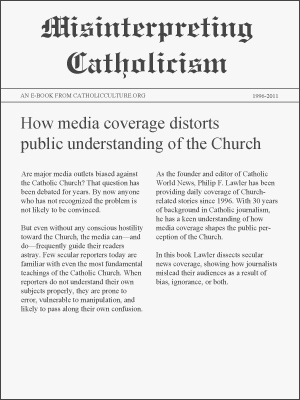Christmas: January 8th
Tuesday Christmas Weekday
Other Commemorations: St. Laurence Justinian, Bishop and Confessor (RM); Our Lady of Prompt Succor
» Enjoy our Liturgical Seasons series of e-books!
The Magi are called "saints" for the first time in the writings of Archbishop Hildebert of Tours (1133). In the twelfth century their veneration spread over all of Europe. The authorities of the Church did not prohibit this cult, and Epiphany acquired the popular name of "Feast of the Three Holy Kings" in most countries of Europe.
The name Magi is not a Hebrew word, but of Indo-European origin, and means "great, illustrious." Saint Matthew mentioned the term without explanation because it was well known to the people of Palestine. The Magi originated in Media (Persia), and their caste later spread to other Oriental countries. They were a highly esteemed class of priestly scholars, devoting themselves not only to religion but also to the study of natural sciences, medicine, mathematics, astronomy, and astrology. In several countries they were members of the king's council.
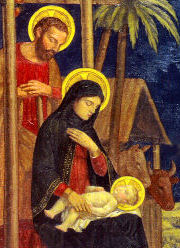 Where did the Magi come from? Saint Matthew gives a general answer: "Wise men from the East." In modern terms, it could have been from any one of the countries of Arabia, Iraq, Iran, Afghanistan, or India. It has never been exactly determined from which of these countries they came.
Where did the Magi come from? Saint Matthew gives a general answer: "Wise men from the East." In modern terms, it could have been from any one of the countries of Arabia, Iraq, Iran, Afghanistan, or India. It has never been exactly determined from which of these countries they came.
Quite early in the Christian era a popular tradition conferred on them the title of "kings." This tradition became universal at the end of the sixth century. It was based on Biblical prophecies which described the conversion of the pagans and, although not referring to the Magi, were applied to their visit:
The kings of Tharsis and the islands shall offer presents: the kings of the Arabians and of Sheba shall bring gifts. (Psalms 71, 10) The kings shall walk in the brightness of thy rising.... They all shall come from Sheba, bringing gold and frankincense. (Isaiah 60, 3-6)
The Gospel does not tell us how many they were. The Christians in the Orient had an old tradition of twelve Magi. In early paintings and mosaics they are represented as two, three, four, and even more. In the occidental Church a slowly spreading tradition put their number at three. It does not seem to have any historical foundation, but was probably based on the fact of the threefold presents. Another reason for the number three was the early legend that they represented all humanity in its three great races. Thus one of them was pictured as a member of the black race, and this choice seemed to be confirmed by the Bible:
Let the great ones come forth from Egypt, let Ethiopia stretch out her arms to God. (Psalms 67, 32)
 The book Collectanea et Flores, ascribed to Saint Bede the Venerable (735), records an earlier legend of their names and appearance:
The book Collectanea et Flores, ascribed to Saint Bede the Venerable (735), records an earlier legend of their names and appearance:
The first was called Melchior; he was an old man, with white hair and long beard; he offered gold to the Lord as to his king. The second, Gaspar by name, young, beardless, of ruddy hue, offered to Jesus his gift of incense, the homage due to Divinity. The third, of black complexion, with heavy beard, was called Baltasar; the myrrh he held in his hands prefigured the death of the Son of man.
There is an old legend that when many years had passed the Magi were visited by Saint Thomas the Apostle, who, after instructing them in Christianity, baptized them. They were then ordained to the priesthood and made bishops. It is said that once more the star of Bethlehem appeared to them and reunited them toward the end of their lives. "The city of Sewa in the Orient" is given as the place of their burial.
The legendary relics of the Magi were brought from Constantinople to Milan in the sixth century. In 1164 Emperor Frederick Barbarossa obtained them from the archbishop of Milan and transferred them to Cologne. Their shrine in Cologne was, and still is, the center of many pilgrimages.
Christmas Weekday - Day Fifteen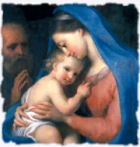 Dawn is the time of day in which the first rays of light begin to glimmer, to illumine and dispel the darkness. . . Christ’s actual birth in Bethlehem shows forth the beautiful reality that God works with things according to their nature. Simply put, it makes perfect sense that a darkened world is tangibly illumined by divine, supernatural intervention upon the natural. — Father Wade L. J. Menezes, CPM
Dawn is the time of day in which the first rays of light begin to glimmer, to illumine and dispel the darkness. . . Christ’s actual birth in Bethlehem shows forth the beautiful reality that God works with things according to their nature. Simply put, it makes perfect sense that a darkened world is tangibly illumined by divine, supernatural intervention upon the natural. — Father Wade L. J. Menezes, CPM
Candles are a symbol of Christ, the Light of the World. The wax is regarded as typifying in a most appropriate way the flesh of Jesus Christ born of a virgin mother. From this has sprung the further conception that the wick symbolizes more particularly the soul of Jesus Christ and the flame the Divinity which absorbs and dominates both. — Catholic Encyclopedia
- Day Fifteen activity (Mexican Christmas)
- Day Fifteen recipe (Little Mince Pies)
St. Lawrence Justinian
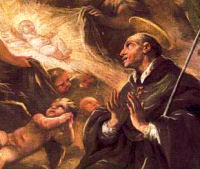 Lawrence, an illustrious example of humility, the "ornament and glory of bishops" (according to Pope Eugene IV), was the first patriarch of Venice. A very pious youth, he was favored in his nineteenth year with a vision of the Eternal Wisdom in the guise of a maiden encircled with light. She invited him to seek her with happiness, rather than satiate his baser lusts. He obeyed the invitation. Soon thereafter he became a clerk regular of St. George on the island of Alga, later bishop of Venice.
Lawrence, an illustrious example of humility, the "ornament and glory of bishops" (according to Pope Eugene IV), was the first patriarch of Venice. A very pious youth, he was favored in his nineteenth year with a vision of the Eternal Wisdom in the guise of a maiden encircled with light. She invited him to seek her with happiness, rather than satiate his baser lusts. He obeyed the invitation. Soon thereafter he became a clerk regular of St. George on the island of Alga, later bishop of Venice.
Some of St. Lawrence's special charisms were the gift of tears, power over devils, prophecy. One Christmas night the Christ-Child appeared to him. When an attempt was made during his last sickness to put him on a more comfortable bed, he refused this pleasure with the words, "My Savior died not on feathers but on the hard wood of the Cross," and requested to be laid on his usual couch. As he felt his last moments approaching, he lifted his eyes to heaven and said, "I am coming, good Jesus, to You," and slept blessedly in the Lord (January 8, 1455). At the time Venice was at the zenith of its influence and wealth. But God made that proud city understand that her greatness resulted more from the sanctity of her poor patriarch Lawrence than from the diplomacy of her doges and the power of her galleys.
—Excerpted from The Church's Year of Grace, Pius Parsch
Symbols and Representation: Bishop’s mitre; bishop’s crosier
Patronage: Venice, Italy
Highlights and Things to Do:
- Learn more about St. Lawrence Justinian:
- Read Two Great Saints on Prayer
Our Lady of Prompt Succor
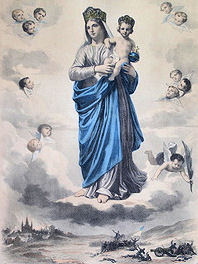 Devotion to Our Lady of Prompt Succor dates back to 1802, when the Ursuline Order in New Orleans pleaded for help in sustaining the Order with new sisters from France. Their prayers were answered with papal permission for sisters to be transferred from France to New Orleans. In thanksgiving for this favor, the Ursulines dedicated a statue in their convent chapel to Our Lady of Prompt Succor in 1810.
Devotion to Our Lady of Prompt Succor dates back to 1802, when the Ursuline Order in New Orleans pleaded for help in sustaining the Order with new sisters from France. Their prayers were answered with papal permission for sisters to be transferred from France to New Orleans. In thanksgiving for this favor, the Ursulines dedicated a statue in their convent chapel to Our Lady of Prompt Succor in 1810.
In 1812, a terrible fire broke out in New Orleans, and the wind was blowing the flames toward the convent. Prayers before the statue of Our Lady were answered with a reversal of the wind direction and the convent was spared.
During the Battle of New Orleans, in 1815, the sisters again invoked the assistance of Our Lady of Prompt Succor. As the sound of guns and cannons thundered around the chapel during Mass, they vowed to have a Mass of Thanksgiving sung every year if the Americans were victorious. At Communion time, a messenger arrived with the news that Gen. Andrew Jackson's overmatched army had successfully driven the British from the city. Once again Our Lady had responded promptly.
In 1928, the Holy See approved the selection of Our Lady of Prompt Succor as the Patroness of the city of New Orleans and the state of Louisiana. The Mass of Thanksgiving is offered each January 8 at the Shrine of Our Lady of Prompt Succor in New Orleans.
Patronage: Camerino, Italy; Castellammare del Golfo, Italy; Kercem, Malta; Louisiana; archdiocese of New Orleans, Louisiana; city of New Orleans, Louisiana
Highlights and Things to Do:
- Visit virtually National Shrine of Our Lady of Prompt Succor.
- Read more about Our Lady of Prompt Succor:


